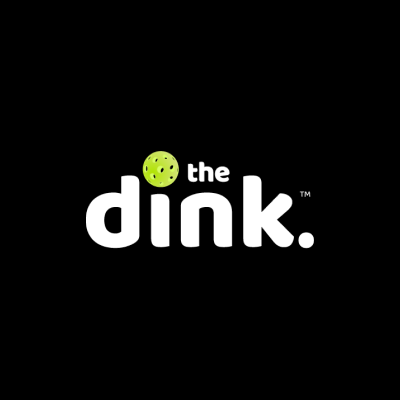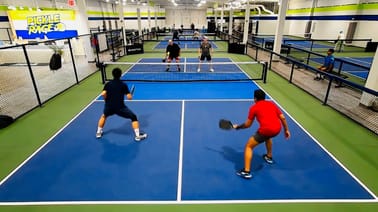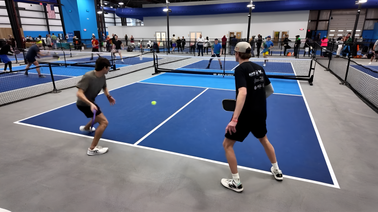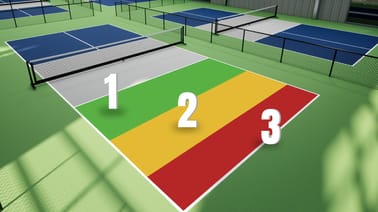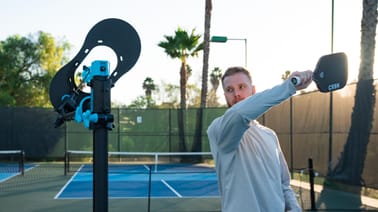
You just crushed a serve. The return is on its way back. Time to decide: drop or drive.
If you're still thinking about it, it might be too late.
For a drive, you want to meet the ball early. Catch it on its way up.
The goal is to put pressure on the opponent. Meeting the ball early allows less time for them to get into position at the NVZ.
Combine that with pace, and you've limited their ability to get comfortable.
Use the drop if you're behind the baseline, far back in the court, or if your opponents are both already in a strong position at the NVZ.
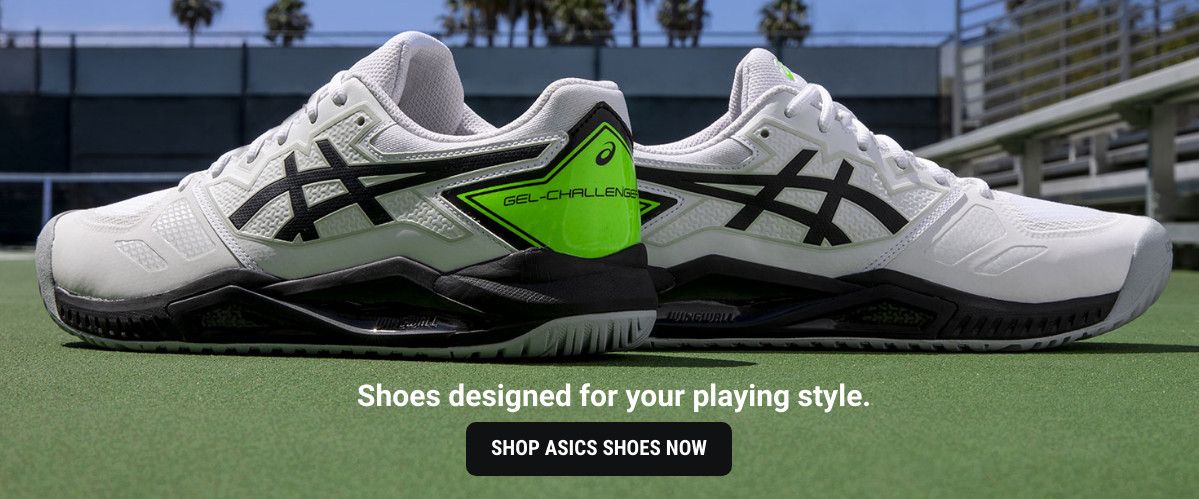
It's time to upgrade your shoes. Save 10% at fromuthpickleball.com with code 10DINK.
A drop, on the other hand, is not dependent on time. You're not going to catch anyone out of position or on the move with the drop. So take your time.
For the drop, you don't need to rush to the ball. You actually want the ball to slow down to give yourself an easier shot.
Off of the bounce, wait for the ball to reach its apex and start descending. This allows some of the spin from their shot to dissipate and for the ball to slow down.
Read Next: Reading Your Pickleball Opponent: Look for These Tells
The drop is all about control. Obviously, a ball that is slow and not spinning is easier to control. Give yourself the advantage by being patient.
The takeaway: start thinking ahead.
If you see a ball you can drive, jump on it early. If they hit a solid, deep return, take your time and wait for the ball to descend before attempting the drop.
We send our newsletter subscribers valuable pickleball tips like these three days a week. Up your game by subscribing now:


